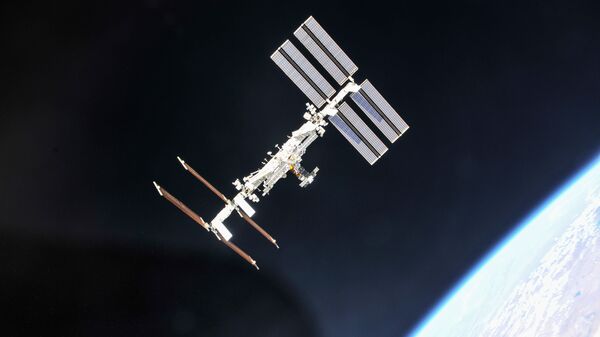The month-long search for the source of the toxic benzene leak aboard the ISS hit another snag due to the short-circuiting of the US Air Quality Monitor 1 (AQM-1), NASA has confirmed.
Last week, the ventilation systems between the Russian and US segments of the stations were split to try to determine the benzene’s source. AQM-1 was able to offer two readings in the Russian segment before tripping a circuit breaker on Friday. The system’s failure prompted astronauts and ground control to reintegrate the segments’ atmospheres.
Roscosmos first reported heightened benzene concentrations inside the ISS on May 20, a week-and-a-half before the expected arrival of a NASA SpaceX Crew Dragon with two US astronauts onboard. The search continued in June, with the AQM-1 measuring air quality in the Russian Zvezda service module. Astronauts temporarily separated ventilation systems on June 12. Later, NASA speculated that the increase in benzene levels may have been caused by an air filter installed in one of the US modules aboard the station, indicating that specially designed charcoal HEPA filters may have absorbed benzene and other compounds and begun pushing the benzene off the filters, elevating toxicity levels.
Russia’s space agency confirmed Friday that the work on finding the source of the benzene is ongoing.
In March 2019, ISS air analyzers revealed a heightened concentration of isopropyl alcohol after the arrival of an unmanned Crew Dragon, with analysis concluding a concentration of about six milligrams per cubic meter, which decreased to about 2 milligrams per cubic meter after air purification systems were turned on.
Benzene is a colourless liquid with a distinct sweetish odour. It’s used in the production of medicines, plastics, synthetic rubber and dyes, and is toxic and carcinogenic.
The International Space Station consists of 15 pressurized modules, including 5 Russian modules, 7 US modules, 1 Japanese module, 1 European module and an experimental Bigelow Expandable Activity Module (BEAM) developed by NASA contractor Bigelow Aerospace. Construction of the space station began in 1998, with the ISS’s modular design based on the tried and tested designs developed by the USSR with its Salyut, Almaz and Mir space stations. Some of the Russian modules aboard the ISS were initially developed for the Mir-2, a space station designed in the mid-1980s but never built.



